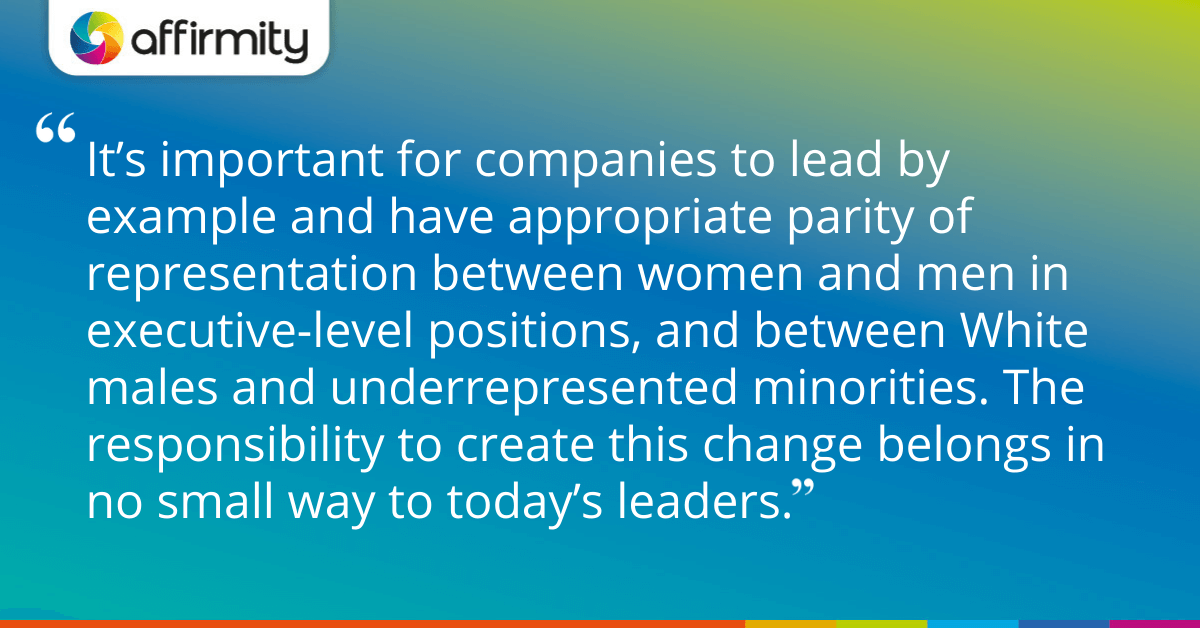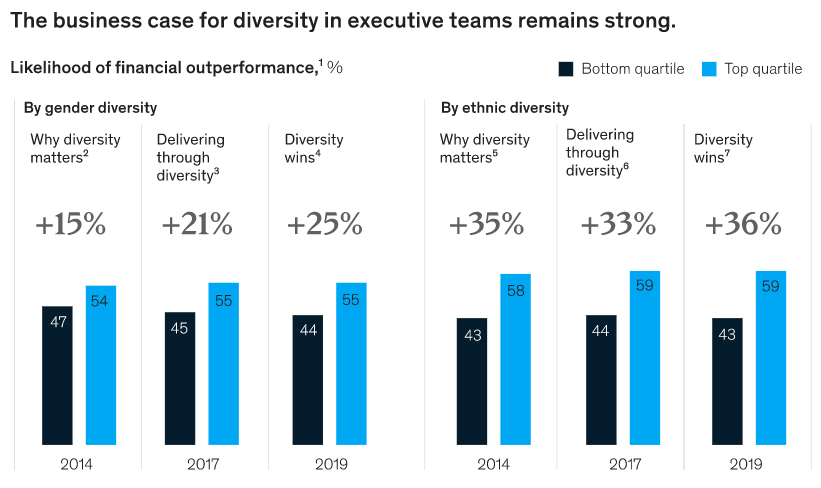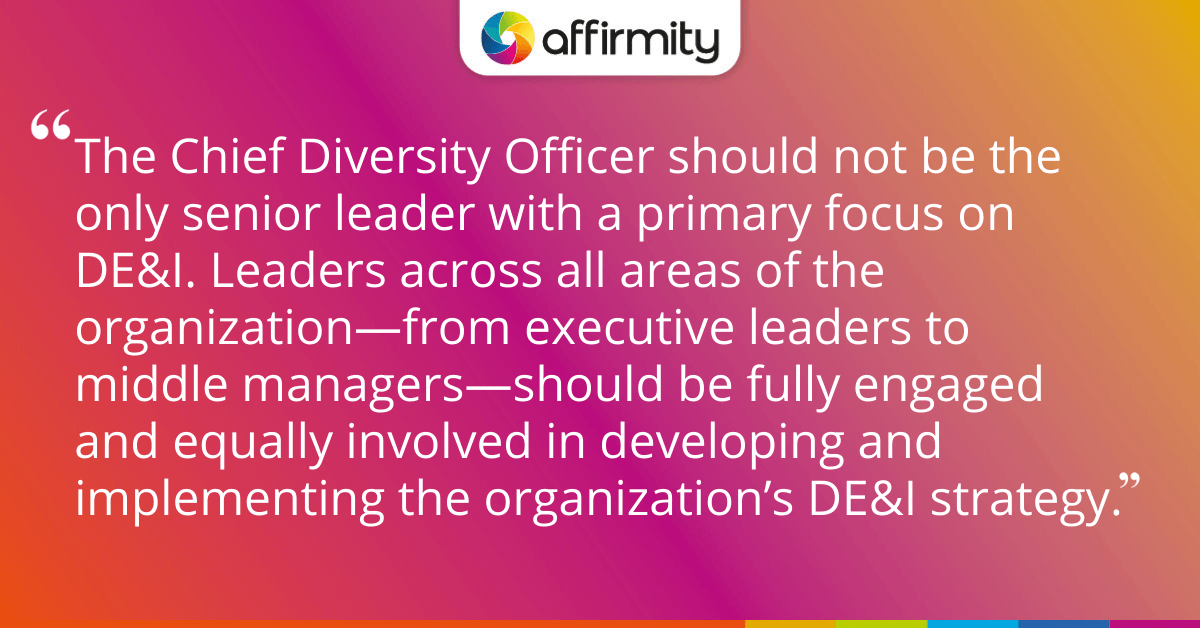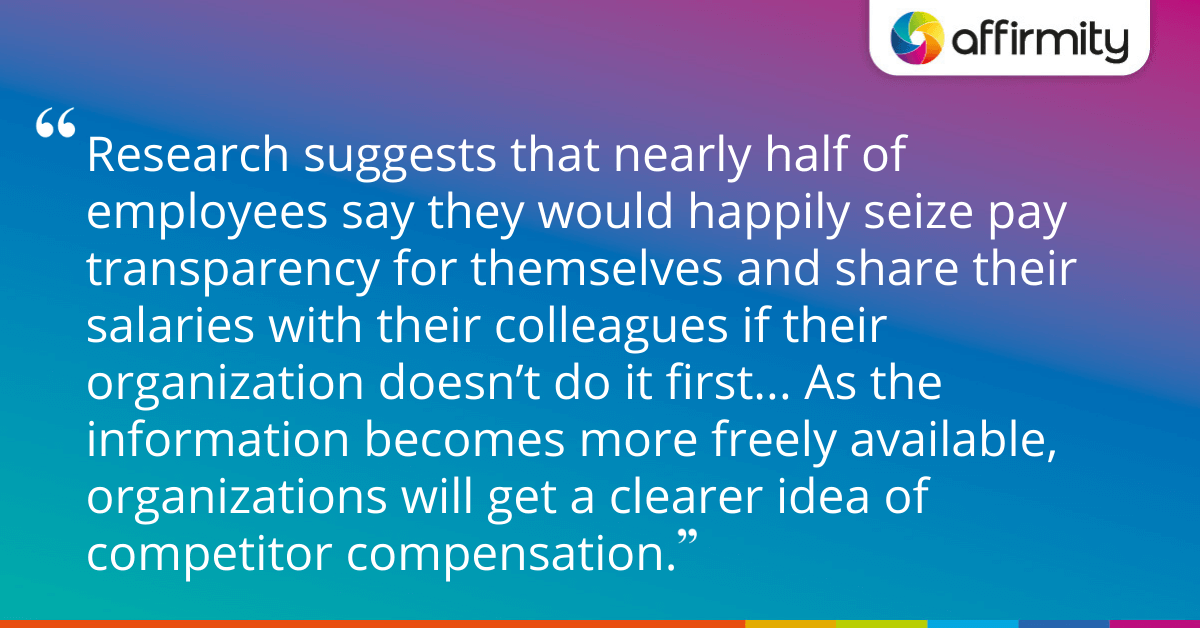Find out why the success of your organization’s diversity and inclusion program is ultimately dependent on pay transparency and a C-suite that practices what it preaches—and why the benefits of diverse leadership and visible pay equity are underrated.
It remains undeniable that there are few easy answers in DE&I. Good intentions must be backed by the right framework if a strategy is to prove capable of not only delivering results, but delivering them faster. In this extract from our new guide, ‘5 Key Strategies to Accelerate the Momentum of Your Diversity, Equity, and Inclusion Program’, we take a look at two crucial components—diverse leadership and visible equity.
Lead Inclusively
Much is rightly made of the importance of visible diversity in the C-Suite. According to HR Technologist, the headline-grabbing number of female CEOs leading US Fortune 500 companies in 2019 was still only 6.6% of total—to say nothing of the 2.8% representation of women on the global list. They argue, as others have often argued, that this underrepresentation sets a tone across the organization: lack of visibility for women and people of color perpetuates similarly stagnant pay disparities and workforce balance throughout the organization.

Parity is plausible. It’s important for companies to lead by example and have appropriate parity of representation between women and men in executive-level positions, and between White males and underrepresented minorities. However, the responsibility to create this change belongs in no small way to today’s leaders, even as policies and pledges call for improved representation in company leadership.
That sounds like a tough sell, but those organizations that commit and action change at their highest levels benefit from doing so. Research from McKinsey&Company has shown that companies in the top quartile that have ethnic/cultural diversity on their executive teams were also more likely to have industry-leading profitability.

Returning again to McKinsey’s Diversity Wins, the graph above shows that ethnic diversity in the executive team results in a 36% increase in the likelihood of financial performance versus the national industry median. Gender diversity shows a 25% increase in the same.
Truly inclusive leadership is ultimately about action. Any CEO—male or female—can implement policies that have an impact—positive or negative—on the working lives of women in their organization. While visible diversity is a clear direction for any business that wants to increase performance, it’s not a prerequisite of action.

Whatever your leadership composition, you must be proactive in developing transparent and inclusive agendas around diversity. Some ways to achieve this include:
- Make DE&I relevant to every leader: The Chief Diversity Officer should not be the only senior leader with a primary focus on DE&I. Leaders across all areas of the organization—from executive leaders to middle managers—should be fully engaged and equally involved in the development and implementation of the organization’s DE&I strategy.
- Invest in DE&I expertise: DE&I training is invaluable, but it isn’t a cure-all for every issue it advises on. Organizations need to carefully hire a well-resourced team of DE&I experts. This is something the Society for Human Resource Management suggests only one-third of employers have.
- Keep assessing: Leadership should also review policies frequently to ensure that systemic biases are not hindering progress. DE&I strategies should not be static, but fluid and evolving to address any changes that have occurred in the organization.
Prepare for the next phase of your AA program with our blog post: ‘5 Ways to Prepare for Your 2021 Affirmative Action and Diversity Initiatives’.
Incorporate Equity
Whether equity makes it into the names of our DE&I departments and products or not, it’s a critical piece of the puzzle and a key contributor to the success of both diversity and inclusion. Citing a World Economic Forum report, HRTechnologist.com notes that the road to achieving true gender parity is around 99.5 years long. Until then, being able to prove you are an equitable employer (or are at least striving to be) will make you more attractive to prospective employees. It also aids retention when you can prove to employees that they’re getting a fair deal.
The HR Technologist piece highlights examples of organizations already committing to equity:
- GoDaddy began to publicly share its gender pay data and took action to bring the pay of women in technical and management roles in line with their male counterparts.
- Starbucks has achieved 100% pay equity in both the US and UK.
- Salesforce adjusted the salary of 6% of its employees (the majority being women) at a cost of $3 million USD to achieve pay parity.
- Medtronic has achieved 99% pay equity globally.
Meanwhile, unfair pay becomes progressively less attractive. ADP’s 2019 Workforce View in Europe report found that 75% of Millennials would consider quitting their job if their employer was paying men and women unequally. In addition to the 1963 Equal Pay Act and 1964 Civil Rights Act at Federal level, 42 states have equal pay laws.

Up until relatively recently, these trends have meant little considering that it has been difficult—often contractually prohibited—for employees to gain any understanding of pay in their organization. However, with 67% of organizations saying transparency is increasing in importance in their organization, and 60% now having at least ‘moderate’ pay transparency, employees increasingly have visibility on this information, or precedents to cite when suggesting that they should have such visibility.
Resisting this change may be ultimately futile: research suggests that nearly half of employees say they would happily seize transparency for themselves and share their salaries with their colleagues if the organization doesn’t do it first. Organizations should also consider demonstrating equity beyond pay—equal access to sponsorship opportunities, resources, support, and benefits.
The benefit of this transparency isn’t just the opportunity to stay ahead of a trend. As the information becomes more freely available, organizations are able to get a clear idea of how competitors are compensating their employees. They can make more competitive offers, and potentially promote positive discrepancies. In one survey, 63% said that a company that discloses its gender pay gap figures each year was more attractive to work for.
Also on the blog: ‘What is Fair Pay? And What’s the Difference Between Equity and Equality?’
Accelerating Your DE&I Program: Continue Reading
There’s more to discover in the guide, which also covers:
- The importance of knowing your diversity numbers and establishing regularity, benchmarking, and a greater depth of understanding of your data
- How to cultivate a culturally aware climate by embracing intersectionality and encouraging allyship
- The process of learning an inclusive language and making your training programs as widely accessible as possible
Download your copy of the guide today.

